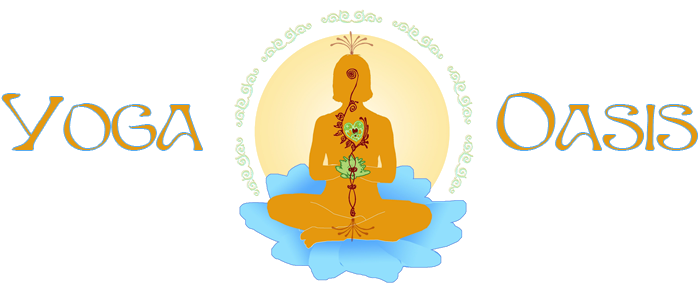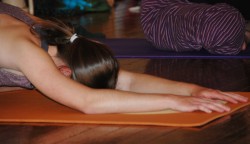Share this article on Facebook
Have you ever come into ‘child’s pose’ or any pose that tapped into and released a well of emotions? This is no surprise to the seasoned yogi, who knows that Yoga can be a powerful tool for accessing and learning how to modulate our emotional realm. This realm is connected to water.
WATER is essential for life, and is the elemental energy of FLOW. Previously, I focused on how Yoga engages the EARTH element through the muscles & bones, creating grounding and safety within the subtler realms. As mentioned, the elements provide a conceptual framework, aligning conscious and unconscious, inner and external realms of experience.
The element of water speaks to fluidity and aligning to the ebb and flow of life. Yoga attunes our psyche to the subtler realms of feelings experienced, and is heavily affected by the moon, and liquid cycles within us (women’s lunar menstrual cycles). So how is water balanced through yoga practices? In summary: engaging particular posture practices, through learning how to ‘be’ with emotions, engaging breathing practices and the energy body (chakras).
There are many differing styles of yoga posture (Hatha) practice, some with names of lineages (Kundalini, Ashtanga/Raja, Tantra…) or those arising in modern times, sporting their creator’s name or essence of the path (Iyengar, Vini-yoga, Anusara, Jivamukti…). The style referred to as Vinyasa Flow Yoga, (popularized primarily by Shiva Rea), is one where the practice typically flows, from one pose to the next, in alignment with the breathing. Some studios add heat, which turns up the intensity (hot power). This is a fabulous style for the person who is rather sedentary, hard to get motivated, and physically on the bulky side. Unfortunately, many thin, already energetic folk are drawn to this style, but over time, it can agitate the waters/emotions and dry up the subtler energy life force (prana). One is always advised to pay heed to the longer terms effects of the practice.
Another style conducive to engaging into the watery realm of emotions is Yin Yoga; this practice focuses on longer holds of poses that allow the practitioner to notice and process emotions that arise. It is an excellent opportunity to release emotions trapped in the body; as I call it ‘Issues in the Tissues’. It is essential that the breath is employed in ways to keep the mind present in the body to experience the many differing phenomenon that arise, from physical discomfort, to emotions, to mental resistance (when is this pose going to end; Soon it will be lunch…). Essentially one is practicing to stay present and ride the waves of experience without fight, flight or freeze. This can be a very healing practice, and help us recognize and stay centered in calm, especially when life throws us curveballs.
Engaging breathing practice unto itself, is also a primary yoga tool of discovering the ever changing life force energy within. Accessing ‘prana’ as yogi’s call it (or chi, ki in other Eastern traditions), brings about awareness of the subtle fields of experience, and leads to experiencing and conscious engagement of the chakra system. We begin with realigning our breathing patterns to deep, smooth flow, and then evolve to more sophisticated practices that serve to regulate our emotional responses and strengthen life force energy. Deep breathing is a profoundly healing practice unto itself.
Like our emotions, the chakra system (main vortices and their conduits/nadis) reside in the Pranic realm of our layered being. If one attunes to specific chakras, employs breathing and visualizations, one can modulate the energy, much like tuning a radio dial to a clear station, with desirable music and appropriate volume. When one practices the skills of tuning into these more subtle energies, it becomes effortless to be in a variety of circumstances and remain in a state of comfort and ease.
Energetically, the water element resides in the second chakra, but remains an integral part of the whole. The realm of influence is with our need for pleasure, intimacy in relationships, and our emotional connection to the planet, and to other life forms we co-exist with. Psychologically, when we practice aligning with the calm, reflective qualities of water, we cultivate the emotional qualities to be present and at ease, in all our relations.
Simply being in, on or near water can foster a connection to our emotional body and nourish us like a cool glass of water on a hot day. Take time to consciously reflect and engage water in your life to affect psychological balance as well as cultivate gratitude for water in the myriad of ways it supports you.
A simpler efficacious approach is to engage a simple hand gesture, focused upon balancing the water element within:
Come into a comfortable sitting, kneeling or lying down position, with the spine and head aligned straight. Bring the baby finger and thumb tips together, on both hands; rest the back of the hand on your lap, or by your side, if lying down. Begin focusing on your breathing, noticing it come and go at an obvious place for you; maybe the nostrils, abdomen. Once focused upon the rhythm, shift awareness to the pelvic bowl area, and let your focus be present there. If your mind or emotions pull you away, engage slow, deep breaths following their pathway down and into the pelvic bowl, imaging and calm, clear lake here. On the exhale, release all tension, and relax into moment, one breath at a time. If helpful, say inwardly, in alignment with each breath: I am (on the inhale), relaxed and at ease (on the exhale). Allow yourself to stay with the meditation for at least a few minutes. When you transition out of it, notice how you feel. Practice makes progress towards creating and aligning to your calm center.
Intrigued how the Water Element is Visualized in Art Work? Click here to read and view the art note/image of the Water Element.



